An Incredible Collection of Letters Relating to the Unearthing of King Tut’s Tomb and Howard Carter Up For Auction
FREE VALUATION. To auction, buy, consign or sell or Howard Carter correspondence or Howard Carter memorabilia, please email Nate at [email protected] or phone the Nate D. Sanders Auction House (http://www.NateDSanders.com) at (310) 440-2982.
We are very proud to have in our August auction a large collection of exceptionally rare letters of correspondence, including from Howard Carter, discussing the discovery of King Tutankhamun. Each letter is written by a key player during the Epytomania period of archaeological discovery.
Egyptologist Howard Carter
Access to the tomb became a contentious issue for the archaeologists and various governments involved, as the collection illuminates. Highlighting the collection is an exceedingly rare telegram written by English Egyptologist Howard Carter, the famed discoverer of King Tut’s tomb.
The auction ends Thursday, August 28th 2014 at 5p.m. pacific time.
It had become practically hopeless, of course, the finding of the most elusive tomb in the Valley of the Kings — that of Tutankhamun.
But on 26 November 1922 after years of persistent searching, Howard Carter, with an unquenchable archaeological thirst, took a chisel his grandmother had given him for his seventeenth birthday to a doorway discovered at the bottom of a set of stone steps, and in doing so, unlocked one of history’s most well-kept secrets.
“Can you see anything?” His counterpart asked him eagerly.
With a candle through the breach in the door, he replied awestruck —
“Yes, wonderful things.”
Just two weeks after discovering the sarcophagus, he writes this exceedingly rare telegram with a direct mention of the tomb itself.
”Urgent” Telegram Pertaining to King Tut’s Tomb, Sent by Lead Excavator Howard Carter in 1923 — ”Arrangements have been made to close the tomb on Monday…”
The telegram is addressed to Abdul Hamid Soleman Pasha, minister of Public Works in Cairo, and was written from the excavation of KV62, King Tut’s tomb. Carter writes “urgent” as the matter of allowing the public access to the tomb became a rather tense issue between Carter and his peers and the Egyptian government.
Content reads in full, “arrangements have been made to close the tomb on Monday 26. please arrange for Saturday or Sunday [illegible]”.
Telegram originates in the office at Luxor and date stamp indicates February of 1923, and in the text Carter mentions Monday the 26th; indeed in February of 1923 the 26th was a Monday.
Carter was appointed by the Egyptian Government as Inspector General of the Antiquities Department after spending 10 years working in the region. He was hired in 1907 by Lord Carnarvon, the famous English aristocrat who backed the famous excavation and was with him during the initial discovery.
It’s estimated Carter’s team had 70,000 tons of sand and gravel moved before eventually uncovering the tomb.
History has it that a workman found a step cut in bedrock at the corner of the excavated tomb of Rameses VI and further unearthing exposed the beginning of a steep flight of rock steps leading downward below the bed of the valley.
Here is a great cross-section of the tomb that shows its incredible intricacy:
On 16 February 1923, Carter opened the sealed doorway, and found that it did indeed lead to a burial chamber, and he got his first glimpse of the sarcophagus of Tutankhamun.
Earlier that year, French Egyptologist Pierre Lacau, Director of Antiquities in Egypt, wrote the following letter discussing the excavation of King Tut’s tomb.
Lacau and Carter had a contentious relationship as the excavation progressed — it took 8 years to remove all of the treasures from the tomb, and the issue of who was permitted in the tomb during this time became a bone of contention between Lacau and Carter; when Lacau banned nearly everyone including the wives of the team, Carter took offense, temporarily abandoning the excavation.
French Egyptologist Pierre Lacau Typed Letter Signed Regarding the Excavation of King Tut’s Tomb in 1923
Written in French upon his official stationery and dated 27 January 1923, letter is addressed to “Mr. Under Secretary of State” and is signed “P. Lacau”. Letter is partially untranslated and mentions “the mummy”, referring to King Tut, and also “Tout Ankh Amon”. It continues that the mummy cannot stay where it was found in the sarcophagus. Content also refers to the Egyptian government’s limiting of visitors to the tomb, “…so work can go quickly and well…” It additionally references Amenophis II, another pharaoh who was buried in the Valley of the Kings.
The issue of who was permitted in the tomb over the course of the excavation continued to be a source of conflict and the U.S. wanted access for VIP government officials, as this letter notes.
On 18 January 1924, the following typed letter from the Legation of the United States of America was sent to an Egyptian government official, Hamid Soliman Pasha, Minister of Public Works, regarding King Tut’s tomb.
1924 Letter Regarding King Tut’s Tomb — The U.S. Government Writes ”…Rumors are…the tomb of Tut-ankh-amen will be open for inspection of tourists…”
The diplomat who writes the letter asks for access to the tomb for a VIP list including several U.S. Congresspeople and their guests, and not so subtly stresses the critical nature of U.S. tourism to Egypt.
Reads in part, “Excellency: Rumors are current that on a certain day of each week the tomb of Tut-ankh-amen will be open for inspection of tourists traveling in Egypt, who are sufficiently important to be recommended by their respective Legations. I have refrained from troubling your excellency with the many requests which have come to me from Americans visiting Egypt, for permission to visit this famous tomb, asking admission only for those connected with newspapers and magazines, but if the above mentioned rumor is true, or it is possible to enter the tomb of Tut-ankh-amen, I should be grateful if permission might be given to the following persons: Hon. Frederick Hicks, ex-congressman…and his daughter and Miss Williams…I cannot refrain in this connection to call your Excellency’s attention to the fact that the tourist travel in Egypt is, as your Excellency knows, very largely dependent upon the American people, and by reason of the revenue which the people of my Government bring to Egypt, it would appear that the greatest consideration be given them.”
We also have a second 1924 letter pertaining to a journalist’s request to access the tomb.
1924 Letter Signed From the Egyptian Government Regarding the Excavation of King Tut’s Tomb — ”…stone from king Tout-Ankh-Amoun’s tomb…a crypt cut out in the rock…”
Typed letter signed from Egypt’s Under Secretary of State pertaining to King Tut’s tomb. An Egyptian official responds to an inquiry from a “Chicago Tribune” correspondent regarding its excavation.
Reads in full, “Sir: With reference to your letter addressed to H. E. the Minister dated March 13th, 1924 asking whether it would be possible to secure a stone from king Tout-Ankh-Amoun’s tomb for incorporation in the new Tribune’s building in Chicago, I have the honour to inform you the tomb in question is not a building but, in reality, a crypt cut out in the rock and it is not possible to take off any part of its rocky wall. This Ministry therefore regrets very much its being unable to comply with your request. I have the honour to be, Sir, Your obedient servant, [signed] M. Zaghlool / Under-Secretary of State”.
Lastly, we have a much earlier pre-WWI letter written by another leading Egyptologist, James Quibell. In 1898 he was made an inspector of the Antiquities Service for the Delta and Middle Egyptian regions. Letter is dated 1906, the year after his landmark discovery of the matrimonial tomb of Yuya and Tjuyu in the Valley of the Kings.
Valley of the Kings Egyptologist James E. Quibell Autograph Letter Signed From 1906 — ”…that I may be granted 3 1/2 months leave to be spent out of Egypt…”
Reads in part, “To the Director General, Dear Sir…I have the honor to ask that I may be granted 3 1/2 months leave to be spent out of Egypt…J.E. Quibell”.
Be sure to check out this large collection of exceptional items in our current auction.
FREE VALUATION. To auction, buy, consign or sell or Howard Carter correspondence or Howard Carter memorabilia, please email Nate at [email protected] or phone the Nate D. Sanders Auction House (http://www.NateDSanders.com) at (310) 440-2982.
Nate D. Sanders Auctions offers the following services for Howard Carter correspondence or Howard Carter memorabilia:
- Appraise Howard Carter memorabilia
- Auction Howard Carter memorabilia
- Consign Howard Carter memorabilia
- Sell Howard Carter memorabilia
- Buy Howard Carter memorabilia
- Research Howard Carter memorabilia
- Howard Carter memorabilia for sale
- Howard Carter memorabilia appraisal
- Howard Carter memorabilia auction
- Howard Carter memorabilia consignment
- Howard Carter memorabilia sold
- Howard Carter memorabilia bought
- Howard Carter memorabilia research
- Howard Carter memorabilia prices realized
- Howard Carter memorabilia value
- Howard Carter memorabilia estimate
- Howard Carter memorabilia appraisement
Lastly, check out this incredible footage amassed during the excavation of KV62:


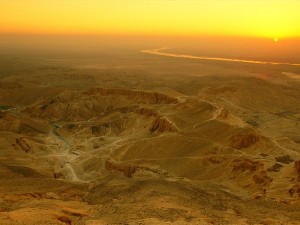
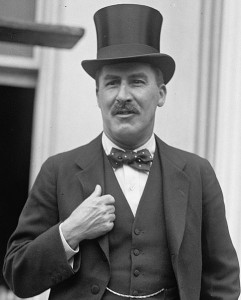
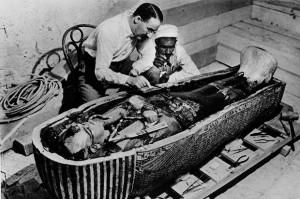
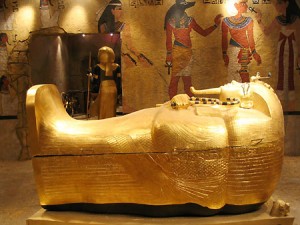
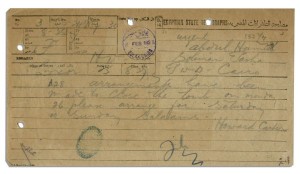
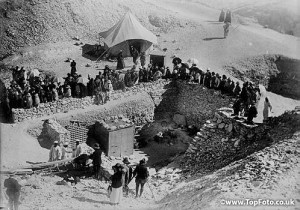
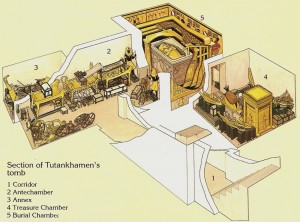
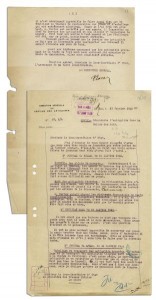
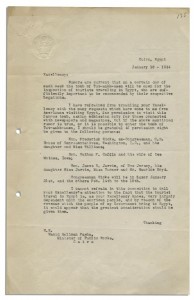
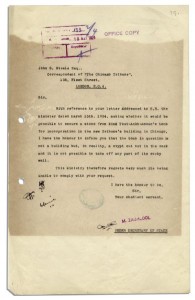
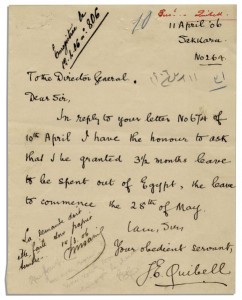
Comments are closed